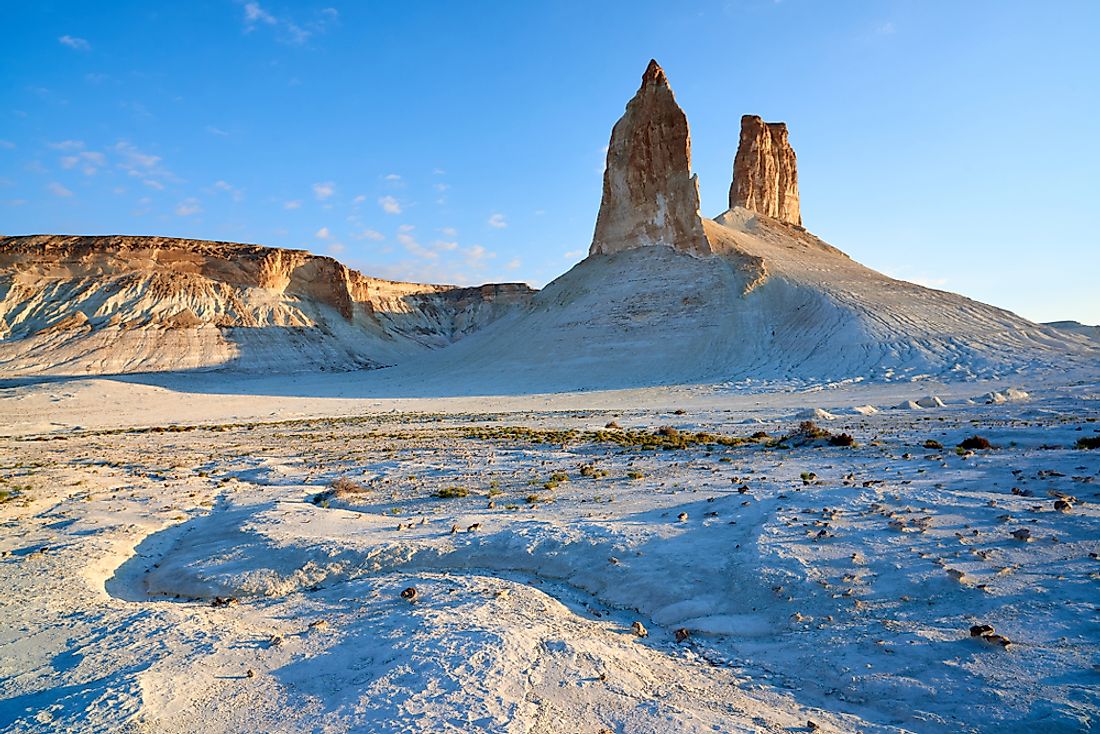What Type Of Climate Does Turkmenistan Have?

Turkmenistan is a landlocked country bordered by Iraq, Afghanistan, Kazakhstan, Uzbekistan, and the Caspian Sea. The Caspian Sea is the country’s largest inland water body. It also forms Turkmenistan’s longest border as its border with the Caspian Sea is 1,768 kilometers long. The capital, as well as the largest city in Turkmenistan, is Ashgabat. The country has a land area of approximately 491,000 square kilometers with a population of about 5.7 million people. Turkmenistan is dominated by Islam. The nation is famous for holding the world’s 6th largest reserves of natural gas. Most parts of the country are located within the Karakum Desert. The climate of Turkmenistan is continental and dry.
Turkmenistan’s Climate
Since deserts and plains cover most parts of Turkmenistan, the country’s climate is categorized as a cold desert climate. The country’s annual average temperature is 18˚C. Rain in the country is rare. Apart from the desert areas, the other parts of Turkmenistan experience mild weather. These areas are the Caspian Sea coastlines and mountainous regions.
Winters In Turkmenistan
Turkmenistan experiences mild and dry winters which run from December to February. The temperatures range from 8-9˚Celsius. The lowest temperatures ever recorded was -32˚C. During winter, the country receives light frosts at temperatures of -15˚C. In Turkmenistan, it mostly rains in winter making the northern parts cold and damp. Autumn in Turkmenistan runs from October to November. It is mostly dry with daily temperatures being 20˚C in October and 14˚C in November. Visitors may enjoy excursions during autumn as the weather is moderate.
Summers In Turkmenistan
Turkmenistan experiences long summers which commence in May to September. It is hot and dry. The highest temperatures were recorded in July 1983 as 51.7˚C. Nonetheless, today the daytime temperatures range from 40-45˚C. It rarely measures below 35˚C. Sometimes the weather becomes too hot that the locals desert the streets and stay indoors. The hottest month is September. In the night, the temperatures go as low as 14-18˚C. Mountainous regions and the coastline of the Caspian Sea experience moderate temperatures during summer making them more comfortable. Thus, the diurnal temperature fluctuations are high. Spring is believed to be the best time to visit Turkmenistan. This period starts in March and ends in April. It is characterized by light showers.
Rainfall Received In Turkmenistan
Generally, Turkmenistan receives low amounts of rainfall most of which fall in winter during the months of December to March. However, in some rare cases, the country experiences heavy downpours. The average rain received per year is 80 mm. The mountainous regions receive slightly higher rainfall than the desert regions. The annual rainfall in the mountainous regions is 300-400 mm. In the capital city of Turkmenistan, Ashgabat, the average annual rainfall is 225 mm. the town’s temperatures range between 17.1˚C and 12.8˚C. Although it rarely rains in the summer, occasionally the country experiences heavy rains that are accompanied by thunderstorms.
What To Wear On Your Visit To Turkmenistan?
Those who travel to Turkmenistan during summer should carry lightweight clothes, headdress, sunglasses, and sunscreen. On the other hand, winter visitors need to carry rain boots, umbrellas, and warm clothes.











